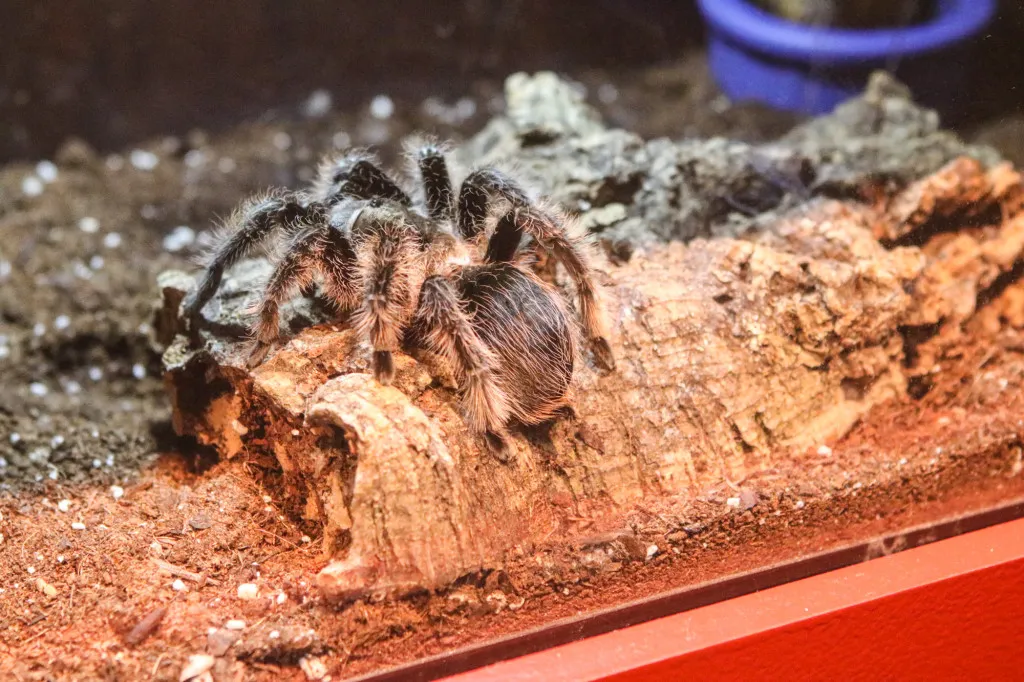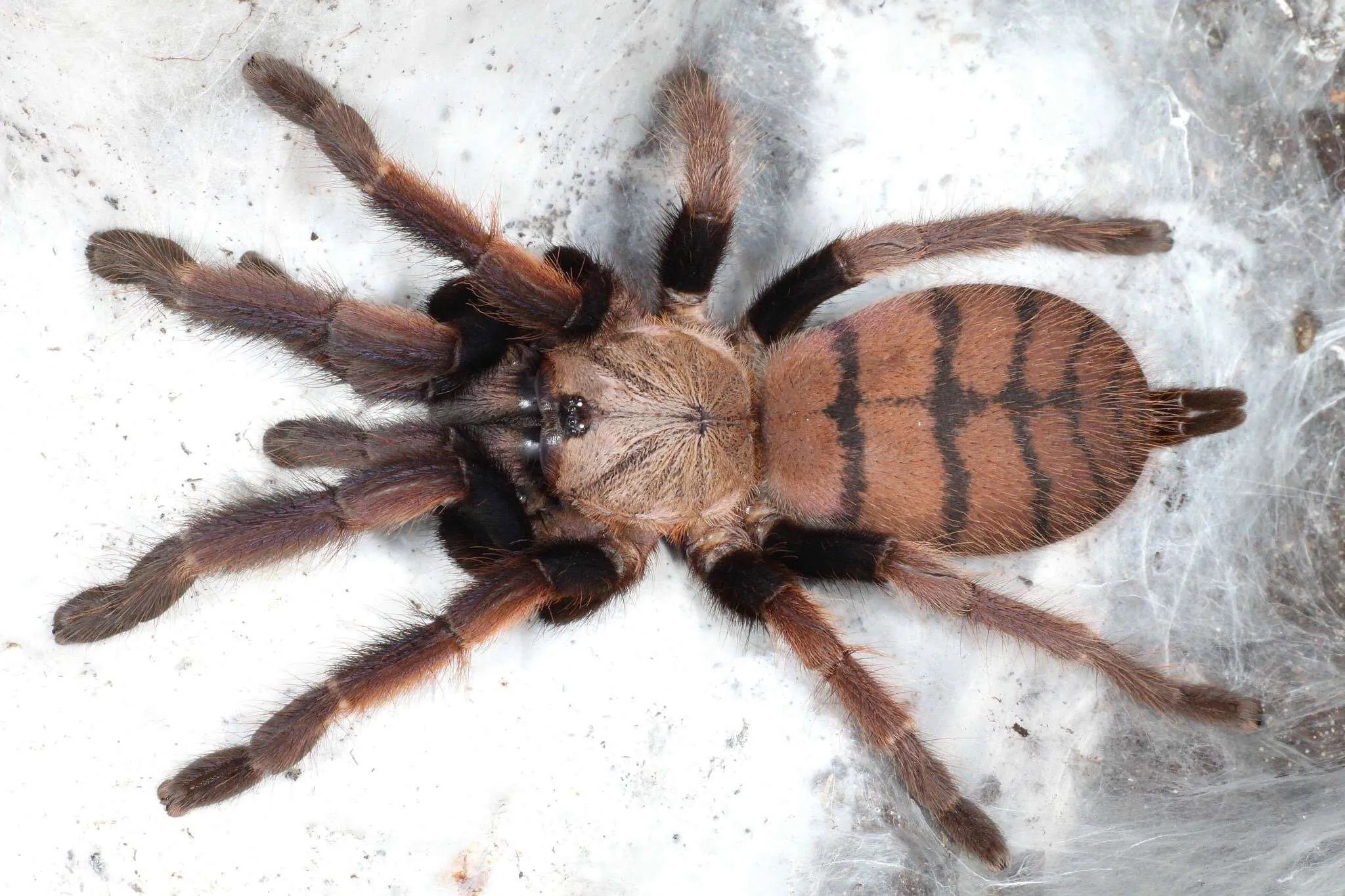Tarantula Senses The Foundation
Tarantulas, with their eight legs and often intimidating size, are fascinating creatures. But what truly sets them apart is their sophisticated sensory system. Unlike humans, who rely heavily on sight, tarantulas have evolved a unique combination of senses that allow them to thrive in their environment. These incredible arthropods have developed intricate ways to perceive the world around them, from detecting the faintest vibrations to identifying the chemical signals of potential mates or prey. Understanding these tarantula senses offers a glimpse into the remarkable adaptations that have allowed these spiders to flourish for millions of years, occupying diverse habitats and exhibiting a wide range of behaviors. Their survival relies on a complex interplay of sensory inputs, painting a vivid picture of the world that is far different from our own. This article aims to delve into the top 5 facts of tarantula senses, exploring the details behind these amazing sensory capabilities.
Understanding Mechanoreceptors
Mechanoreceptors form the cornerstone of tarantulas’ sensory world. These specialized sensory receptors are scattered across their bodies, including their legs, pedipalps, and even their fangs. Mechanoreceptors are essentially tiny sensory cells that respond to mechanical stimuli, such as touch, pressure, and vibrations. These receptors come in various forms, each designed to detect a specific type of stimulus. Some are sensitive to light touch, while others are designed to detect strong vibrations, and some are focused on detecting air movement. This diversity allows the tarantula to build a detailed understanding of its environment, as it constantly receives information about the presence of objects, the movement of potential prey, and the location of potential threats. The intricate network of mechanoreceptors provides the tarantula with a rich and dynamic sensory experience that guides its behavior and enables it to survive in a complex and challenging world.
How Mechanoreceptors Work

The function of mechanoreceptors is fundamentally based on converting mechanical stimuli into electrical signals that the tarantula’s nervous system can interpret. When a mechanoreceptor is stimulated, it causes a change in the cell membrane, leading to the opening of ion channels. This influx of ions alters the electrical potential of the cell, generating a nerve impulse. Different types of mechanoreceptors have different sensitivities and respond to different types of stimuli. For example, some mechanoreceptors are hair sensilla, which are fine hairs that are sensitive to air movement and vibrations, allowing the tarantula to detect the approach of prey or predators. Others are slit sensilla, which are small slits in the exoskeleton that detect changes in pressure, providing information about the spider’s body position. The varied responses of mechanoreceptors enable the tarantula to get a detailed and complex image of its surroundings.
Mechanoreceptors and Prey Detection
One of the most crucial roles of mechanoreceptors is prey detection. When a potential prey item, such as an insect, moves within the vicinity of a tarantula, the vibrations it creates in the air or substrate are picked up by the spider’s mechanoreceptors. The most significant mechanoreceptors are found on the legs, giving the tarantula a comprehensive understanding of its surroundings, including prey or predator location and direction. The tarantula’s nervous system rapidly processes these signals, enabling it to pinpoint the prey’s location and initiate a precise attack. This ability is crucial for the tarantula’s survival, as it allows it to efficiently capture food, even in low-light conditions or in areas with limited visibility. Furthermore, the mechanoreceptors play a significant role in detecting the size and movement of prey, contributing to the tarantula’s ability to choose the most suitable hunting strategy.
Tarantula Senses Chemosensory System
In addition to mechanical senses, tarantulas also possess a sophisticated chemosensory system, which allows them to detect and interpret chemical signals in their environment. This sense is crucial for a variety of functions, including finding mates, identifying food sources, and avoiding threats. Chemosensory receptors are located on various parts of the tarantula’s body, with a significant concentration found on the pedipalps and mouthparts. These receptors detect a wide range of chemicals, including pheromones, which are used for communication among tarantulas, and volatile organic compounds, which provide information about the presence of potential prey or predators. Through this sensory system, the tarantula can gather invaluable information about its surroundings, thus enhancing its chances of survival.
The Role of Chemosensory in Tarantulas

Chemosensory plays a vital role in several aspects of the tarantula’s life. Primarily, it is essential for the detection and recognition of potential mates. Male tarantulas use chemoreceptors to follow pheromone trails left by females, leading them to potential mating partners. Likewise, females use their chemosensory abilities to assess the suitability of males, thus influencing mate selection. The chemosensory system is also essential for the detection of potential food sources. Tarantulas can use chemoreceptors to detect the scent of dead or dying animals, helping them locate and capitalize on these opportunities. Furthermore, chemosensory helps tarantulas recognize and evade threats, such as the presence of predators or dangerous chemicals. The chemosensory system is the key to successful survival and reproduction.
Detecting Pheromones with Chemosensory
Pheromones, chemical signals used for communication, are of utmost importance to tarantulas, specifically during mating. These chemicals are secreted by individuals to convey information about their identity, sex, and reproductive state. Tarantulas possess specialized chemoreceptors that are specifically designed to detect these pheromones. Males use their chemosensory systems to locate and follow pheromone trails left by receptive females, which is a vital aspect of the mating process. The ability to distinguish the pheromone of a receptive female allows the male to identify suitable mating partners. The female also evaluates the male through chemoreception by identifying the presence of specific pheromones and making a choice accordingly. The effective detection of pheromones is the foundation for successful mating and ensures the continuation of the species.
Tarantula Senses Eyesight Perception
While not their primary sense, tarantulas do possess eyes, though their eyesight is comparatively limited compared to humans. They typically have eight eyes, arranged in two rows of four. These eyes, while not providing sharp vision, are capable of detecting light, movement, and shadows. This visual acuity is crucial for recognizing threats, navigating their environment, and potentially assisting in prey detection. It is also worth mentioning that the eyesight of tarantulas varies depending on the species, with some having better vision than others. Although their visual abilities are not as developed as in some other animals, they are still an important sensory tool for these spiders.
Eyesight and the Tarantula’s World

Eyesight has a significant impact on how tarantulas perceive their surroundings. It enables them to distinguish between light and dark and to recognize changes in the environment, such as the movement of prey or the approach of predators. Furthermore, eyesight is particularly useful in close proximity, enabling them to identify the shape and form of objects. This helps them in tasks such as hunting, where they can use vision to position themselves for an ambush, and in navigating their environment, avoiding obstacles, and constructing burrows. While tarantulas do not rely on vision as heavily as humans do, their eyesight is still a vital sensory component that is integrated with their other senses to construct a comprehensive picture of their world.
The Limited Vision of Tarantulas
The eyesight of tarantulas is limited in terms of acuity and distance. They cannot see fine details from afar, and their vision is primarily focused on detecting movement. This limitation means that tarantulas cannot rely on their eyesight as their primary tool for hunting or navigation. Instead, they have evolved to depend more on their other senses, like mechanoreception and chemoreception. However, their vision is still essential in certain situations, especially when detecting and responding to potential threats. Moreover, the ability to discern light and shadow helps in distinguishing between day and night, affecting their activity patterns and behavior. The limitations in eyesight demonstrate how tarantulas have optimized their sensory abilities, placing a higher emphasis on senses that are more effective for their specific lifestyle.
Tarantula Senses Vibration Detectors
Vibration detection is an essential tarantula sense, playing a critical role in both hunting and avoiding danger. Tarantulas are extremely sensitive to vibrations in their environment, which are primarily detected by the mechanoreceptors located on their legs and other body parts. These receptors are highly attuned to even the smallest of vibrations, enabling the tarantula to receive detailed information about the source, intensity, and direction of the vibrations. This ability is crucial for survival in the tarantula’s world, as it enables them to detect the movements of prey, the approach of predators, and the presence of potential mates. The specialized vibration detectors allow them to make informed decisions about their actions, significantly increasing their chances of survival.
Detecting Subtle Vibrations

Tarantulas have an exceptional ability to detect even the subtlest of vibrations in their environment. These vibrations are typically caused by movement, which may originate from potential prey, predators, or even the tarantula itself. The mechanoreceptors located on their legs and other body parts are extraordinarily sensitive to these minute disturbances. For example, the slit sensilla, which are small slits in the exoskeleton, are exquisitely sensitive to vibrations and minute shifts in pressure, providing crucial information about the spider’s surroundings. This sensitivity allows the tarantula to detect the approach of prey from a distance, providing them with a strategic advantage during hunts. The ability to detect such subtle vibrations is a hallmark of the tarantula’s sensory system and is essential for their survival.
Vibration Detection and Hunting
Vibration detection plays a critical role in the tarantula’s hunting strategy. When a tarantula detects the vibrations created by a moving insect, it quickly assesses the source and direction of the vibrations. This helps the spider accurately locate and pursue its prey, even in the absence of visual cues. The mechanoreceptors on the legs and other body parts transmit detailed information about the prey’s position and movement to the tarantula’s nervous system, guiding its predatory actions. Moreover, vibration detection allows tarantulas to distinguish between the vibrations produced by potential prey and those caused by non-prey sources, conserving energy and increasing the likelihood of a successful hunt. Through this highly refined ability, tarantulas have evolved into highly effective predators, capable of capturing prey with remarkable precision.
Tarantula Senses Hairs on Feet
Hairs on the feet of a tarantula serve a variety of purposes, from assisting with movement and gripping to aiding in the detection of environmental changes. These tiny hairs, also known as setae, are highly specialized and play a crucial role in the spider’s sensory perception. They are especially important for the spider’s sense of touch and allow it to navigate its surroundings, assess surfaces, and detect potential threats. The structure and distribution of these hairs vary depending on the species, with adaptations that correspond to their respective habitats and lifestyles. For the tarantula, these hairs are versatile tools that support the animal’s survival.
How Hairs on Feet Work

The hairs on a tarantula’s feet have a unique design that allows them to perform multiple sensory functions. The hairs are covered in tiny barbs or hooks, enabling them to grip surfaces efficiently, allowing for climbing on vertical and inverted surfaces. Furthermore, these hairs are connected to sensory neurons that transmit information to the spider’s nervous system. These neurons respond to any type of contact, pressure, or vibrations. When the hairs are touched, bent, or compressed, they stimulate these neurons, transmitting sensory data to the spider’s brain. This information allows the tarantula to create a tactile map of its environment, allowing it to distinguish between various textures, surfaces, and objects. As such, these hairs act as a crucial component of the spider’s sensory system, providing a lot of data about the world surrounding them.
Hairs on Feet and Navigation
The hairs on a tarantula’s feet play a significant role in navigation, which allows them to move effectively and efficiently in their surroundings. As the spider walks, the hairs constantly interact with the surface, providing constant feedback regarding the terrain, texture, and stability of the environment. This information helps the tarantula make informed decisions about its movements, avoiding unstable areas, and maintaining balance, especially when climbing or navigating uneven terrain. In addition, these hairs help tarantulas grip surfaces with precision, which is especially helpful when climbing or hanging upside down. Thus, the sensory capabilities of the hairs on the feet are integral to the tarantula’s ability to navigate, hunt, and survive.
Tarantula Senses Summary Top 5 Facts
In conclusion, tarantulas possess an impressive array of sensory adaptations that allow them to thrive in their respective habitats. From the intricate mechanoreceptors which are used to detect vibrations and touch, to the chemosensory system which helps to detect chemical signals, tarantulas use a complex blend of senses to interpret their surroundings. While their eyesight is limited, vibration detection and the sensory hairs on their feet play a significant role in navigation and prey capture. These remarkable sensory adaptations are at the heart of the tarantula’s success, equipping them with the tools they need to survive and thrive. Their sensory complexity highlights the beauty and adaptability of the tarantula, offering us a glimpse into a world that is both mysterious and captivating.
